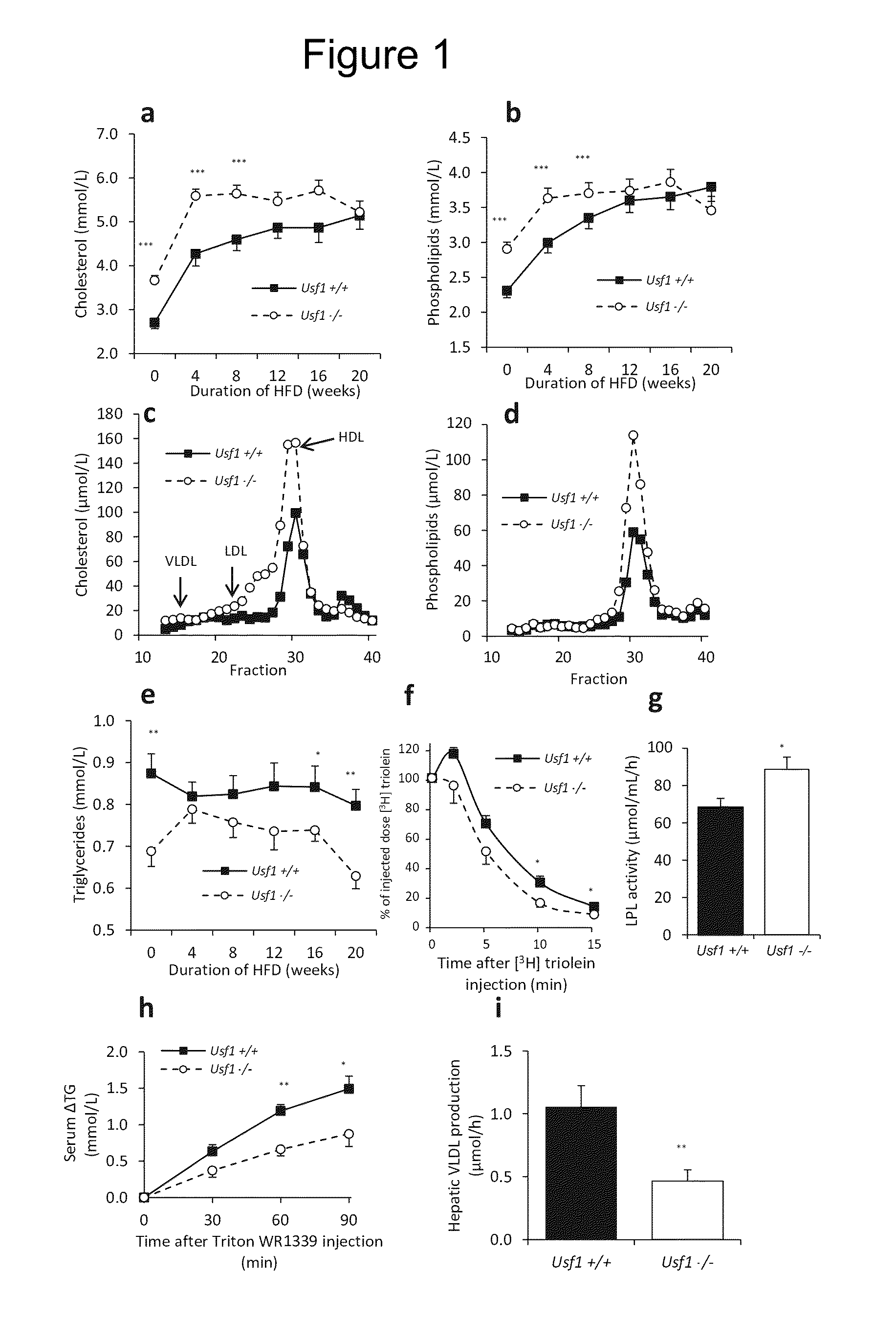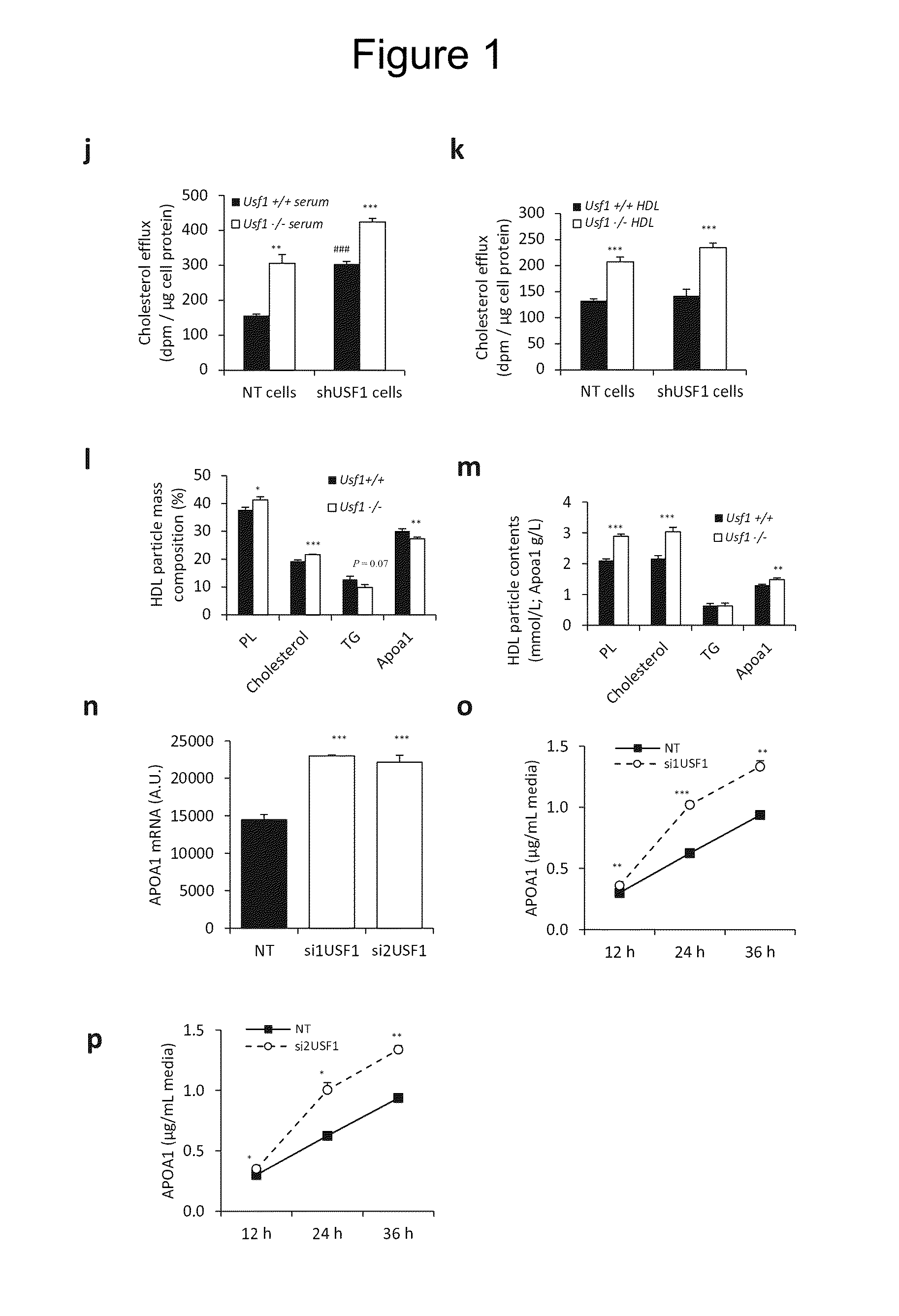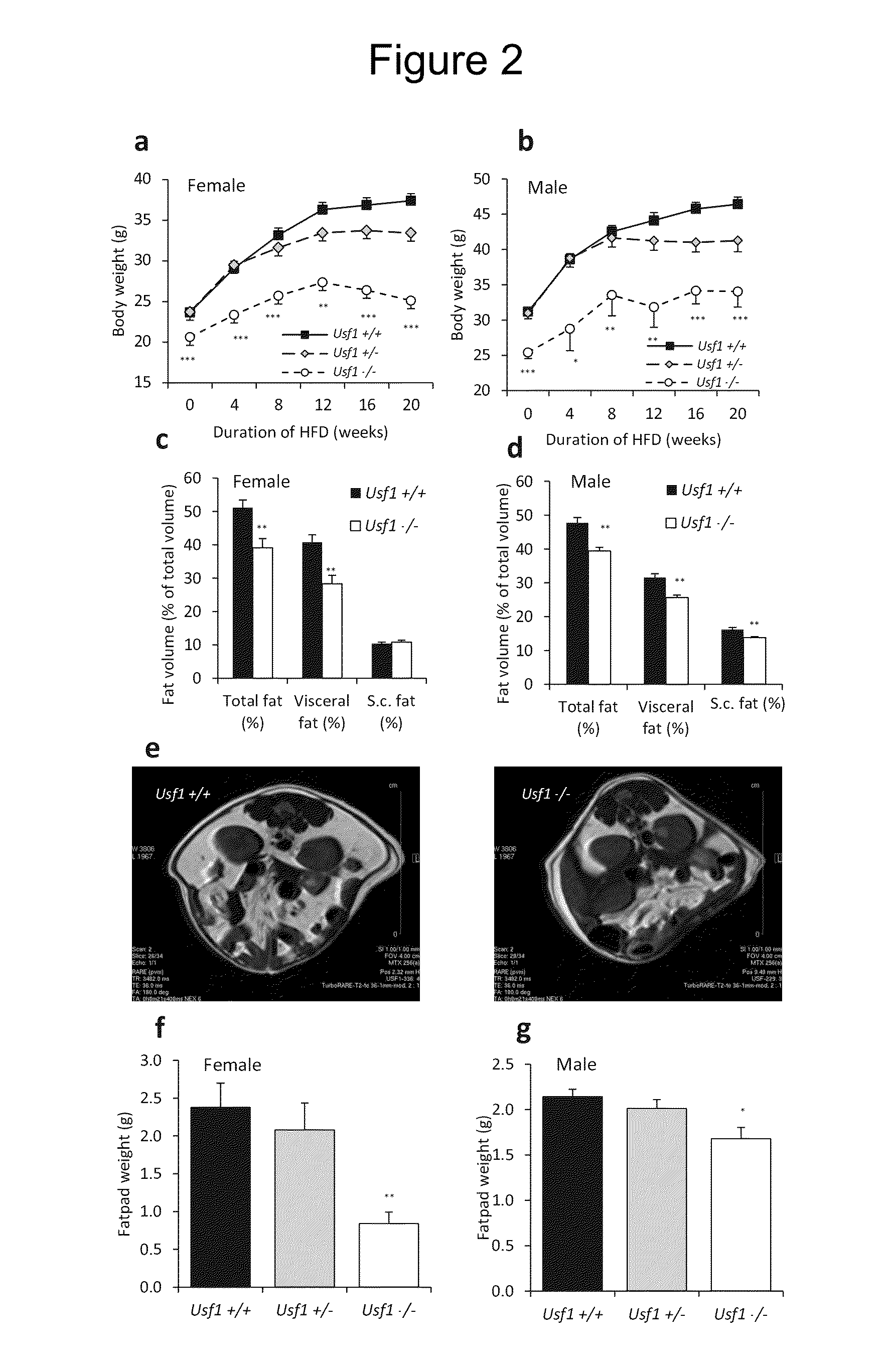Methods to screen compounds for regulating USF1 activity and methods and compounds to treat cardiometabolic and lipid pathologies
a technology of usf1 activity and compound, applied in the field of methods and compounds to treat cardometabolic and lipid pathologies, can solve the problems of not providing practical solutions, unable to disclose, and usf1 has remained elusive, so as to improve insulin sensitivity, induce the function of brown adipose tissue, and enhance the anti-atherosclerotic lipid profile
- Summary
- Abstract
- Description
- Claims
- Application Information
AI Technical Summary
Benefits of technology
Problems solved by technology
Method used
Image
Examples
example 1
USF-1-Deficiency or Inhibition of Usf1-Activity Affects Cholesterol Phenotype in Knockout Mice
[0036]To study the effects of USF1 on lipid metabolism, we generated a mouse model deficient of Usf1 using cell lines obtained from the International Gene Trap Consortium. As USF1 is originally linked with FCHL, and its alleles in humans are associated with plasma triglyceride and HDL-C levels, we first measured the lipid profiles of the mice before and after feeding high fat diet (HFD), also known as ‘Western’ diet for 20 weeks. Before HFD feeding, Usf1− / − mice displayed a substantial 36% elevation in serum total cholesterol (FIG. 1a). During the HFD, the cholesterol levels increased in both Usf1+1+ and Usf1− / − mice. The Usf1− / − mice reached their maximum plateau in cholesterol levels earlier than their wild-type littermates so that at the end of the diet the genotype-related differences in plasma cholesterol had disappeared. In harmony with the cholesterol phenotype, the plasma phospholip...
example 2
USF-1 Deficiency or Inhibition of Usf-1 Activity Improves the Efficacy of High Density Lipoprotein (HDL) Particles as Cholesterol Acceptors
[0040]We then studied whether the elevated HDL levels in the Usf1− / − mice are associated with enhanced macrophage cholesterol efflux. We silenced Usf1 in human THP-1 macrophages by lentiviral RNA (shUSF1) and used serum collected from both Usf1+ / + and Usf1− / − mice as cholesterol acceptor. The knockdown of Usf1 in THP-1 macrophages improved the cholesterol efflux capacity of THP-1 cells to mouse serum, derived from both Usf1− / − and Usf1+ / + mice (FIG. 1i). Moreover, the serum from Usf1− / − mice proved to be a better cholesterol acceptor than serum obtained from Usf1+1+ mice in both USF1 silenced and non-targeted cells (FIG. 1i). We next isolated HDL particles from the sera of both Usf1+ / + and − / − mice. The use of Usf1− / − derived HDL particles as acceptors in cells treated with either non-targeting or Usf1 silencing shRNAs resulted in enhanced choles...
example 3
USF-1 Deficiency or Inhibition of Usf-1 Activity Protects Against Obesity
[0041]We then analyzed whether the Usf1− / − mice differ by weight from their Usf1+ / + littermates. Before the start of the 20-week HFD, the Usf1− / − mice were 12% (males 19%) leaner than Usf1+ / + controls (FIG. 2a-b). Strikingly, the Usf1− / − mice were protected against obesity during the HFD, as evidenced by the 32% (males 27%) difference in body weight at the end of the diet. In order to verify that this dramatic effect of Usf1 on body weight was due to reduced body fat content of the mice, we measured the adipose depots of the mice by magnetic resonance imaging (MRI). Quantification of mouse MRI images after 20 week of feeding with HFD demonstrated that the body fat percentage in Usf1− / − mice was reduced by 24% (males 17%) when comparing with the Usf1+ / + mice (FIG. 2c-e). Importantly, the reduced volume of the metabolically more deleterious visceral fat content is likely to be the predominant factor contributing ...
PUM
| Property | Measurement | Unit |
|---|---|---|
| temperature | aaaaa | aaaaa |
| temperature | aaaaa | aaaaa |
| flow rate | aaaaa | aaaaa |
Abstract
Description
Claims
Application Information
 Login to View More
Login to View More - R&D
- Intellectual Property
- Life Sciences
- Materials
- Tech Scout
- Unparalleled Data Quality
- Higher Quality Content
- 60% Fewer Hallucinations
Browse by: Latest US Patents, China's latest patents, Technical Efficacy Thesaurus, Application Domain, Technology Topic, Popular Technical Reports.
© 2025 PatSnap. All rights reserved.Legal|Privacy policy|Modern Slavery Act Transparency Statement|Sitemap|About US| Contact US: help@patsnap.com



